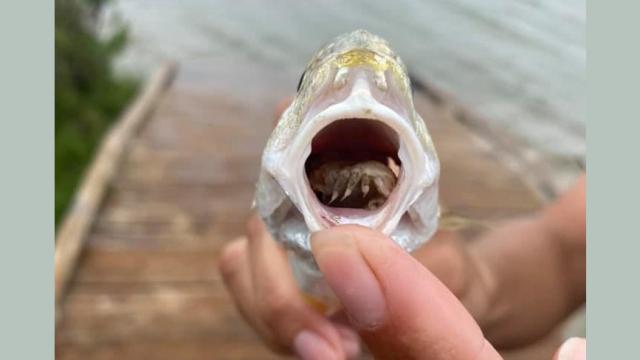Wildlife officials in Texas recently documented a peculiar natural horror: a fish with its tongue replaced by a parasitic crustacean known as an isopod. These isopods aren’t dangerous to humans and are usually not deadly to their hosts, but their unique way of life is another example of the terrors created through evolution.
Isopods are an ancient lineage of crustacean, thought to date back at least 300 million years. Their name is derived from Greek, with “pod” meaning feet and “iso” meaning equal, which is a reference to their seven evenly matched pairs of limbs. There are an estimated 10,000-plus species of isopod, but unlike most other crustaceans, many isopods have become land dwellers. The isopods most people might be familiar with are woodlice, also called pillbugs or roly poly bugs — of course, they’re neither true bugs nor lice.
Woodlice and many other isopods are nature’s composters, feeding on the decaying matter around them; others forage for food by straining water for tiny plankton; and a few are predators. But the most infamous isopods are fish parasites, including the tongue-stealer that was recorded by a Texas Parks and Wildlife employee at Galveston Island State Park this month. In a Facebook post from the park’s social media account, they detailed finding the parasite in the mouth of an Atlantic croaker fish, which they glibly refer to as a “Martian.”
This species of isopod is known as the tongue-eating louse (Cymothoa exigua), an apt description. When young, a male isopod will attach itself to the hapless fish’s gills. As it grows up, it migrates up to the tongue and change its sex to become female. At the same time, the isopod uses its front claws to slice and consume the fish’s tongue; then it scooches right in and attaches itself to the stump where the tongue once laid and takes over. To add one more creep factor, other juvenile males attached to the fish will mate with a mature female while this is all going on. And once the eggs are fertilised and the young are sent out into the water, the awful life cycle begins anew.
Remarkably, the poor fish does seem to use the isopod as its tongue from then on. And unless it’s heavily parasitized, the fish lives as long as normal, though it may not eat as easily as before and can become underweight as a result. Assuming you could ask them, they probably wouldn’t be too pleased about the whole thing. While certain other parasites are known to remove a host’s body parts to make room for itself, the tongue-eating louse is the only known parasite generous enough to pick up the slack and carry out the defunct organ’s functions.
Atlantic croakers are a common host for tongue-eating louses, as are several other fishes, including the red snapper. But these isopods aren’t a threat to humans, and other isopods are even eaten as delicacies. For those in the Halloween spirit, though, a fictionalized and hormone-crazed version of the isopod did serve as the villain of the fairly decent (in this reporter’s opinion) found-footage flick The Bay in 2012. Of course, the real-life story’s plenty scary as is.
